A Marine for All Time

John Stevens, the steely-eyed, tireless Marine who fought in World War II and Korea and played a major role in establishing the Korean War Memorial Foundation’s memorial to Korean War veterans at the Presidio, passed away on May 25, 2021, just four weeks after celebrating his 100th birthday.
During his 23 years as a Marine, Stevens went from private to lieutenant colonel and earned two Bronze Stars for heroism in combat. He served at Pearl Harbor on December 7, 1941; Okinawa during the last major battle of World War II; and the Inchon Landing, liberation of Seoul, and Battle of Chosin in 1950.
His incredible life of service to country and Corps is testimony to the millions of men and women of the “Greatest Generation” who dedicated their lives to saving America and the free world from fascism and communism.
A Poker Game and a Marine Recruiter
John Stevens was born on April 22, 1921, in Butte, Montana. He dropped out of high school at the age of 16 and joined the Civilian Conservation Corps (CCC), where he worked as a baker, lumberjack and fire fighter. After being discharged from the CCC in 1939, he returned to his hometown and, like many young men, found it hard to find a job. When he heard the Navy was hiring, he jumped on the opportunity and went to Salt Lake City to take his enlistment physical.
On the train to Utah, Stevens “sat up all night playing poker" and the next morning failed the eye exam. Discouraged, and regretting the money and opportunity he’d lost in the card game, he headed for home. But fate – and a Marine Corps recruiter – intervened.
“As I was leaving the office, a man in a blue uniform with a red stripe on the trouser leg caught me by the arm,” Stevens said. “Here are some chits for a meal and hotel room," the Marine told him. “Get a good night’s sleep and then come back tomorrow.”
“I didn’t know what the Marine Corps was. I had absolutely no idea, but I didn’t want to go back to Butte,” Stevens recalled. The rest is history. He enlisted in the Marines and never looked back.
A Day That Will Live in Infamy
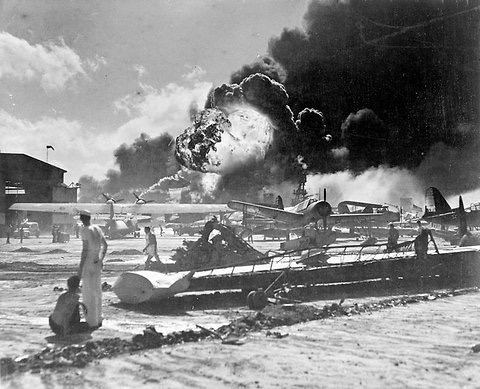
A day that will live in infamy, December 7, 1941. (Photo credit NY Times)
After graduating from bootcamp in San Diego, the 18-year-old Marine joined the 1st Marine Defense Battalion and was eventually sent to Midway Island and Pearl Harbor.
On the fateful morning of December 7, 1941, Stevens, recently promoted to sergeant, was awakened at 7 a.m. by loud explosions. Dashing outside, he witnessed firsthand the effects of bullets and shrapnel on the human body. “Japanese airplanes were dropping bombs and torpedoes on ships,” he remembers, “and then coming back and strafing the general area.”
“The attack was over in only two hours,” Stevens recounted in a speech he gave in 2009. “They were pulling bodies out of the harbor and bringing them over to the naval hospital and stacking them up like cord wood. It was a pretty terrible sight.” The devastating Japanese attack would forever change the 20-year-old Marine, his country, and the world.
The Battle of Okinawa
By 1942, Stevens had risen to the rank of master tech sergeant and been offered a field commission. He accepted the promotion, became a second lieutenant, and two years later was promoted to captain. He then joined the 1st Marine Division Signal Company, where he served as executive officer and worked with Navajo “code talkers,” Native-American Marines who transmitted coded messages in the Navajo language and played a key role in helping defeat the Japanese.
A year later, Stevens was off the coast of Okinawa waiting for the largest amphibious operation of the Pacific War to begin. “As we approached Okinawa, we started receiving Japanese air attacks [kamikazes],” Stevens remembers. “It is very frightening to be aboard a ship when you’re under constant air attack,” he added. “There’s no place to hide. You can’t dig a hole and jump in.”
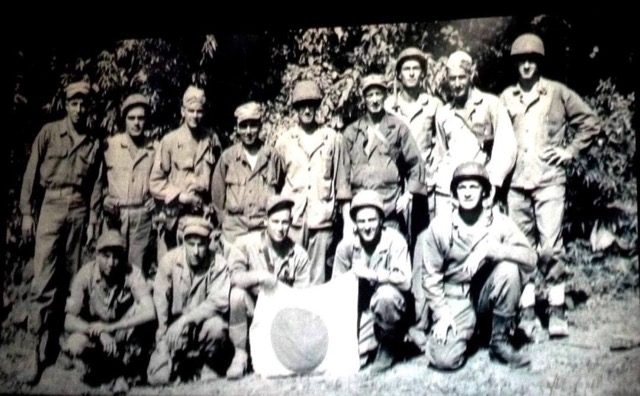
Captain Stevens (standing on far right) and his men at the Battle of Okinawa. (Photo credit: John Stevens)
On April 1, 1945, the 24-year-old landed on Okinawa and spent the next three months fighting the Japanese. The Battle of Okinawa, Japan’s last attempt to destroy the US before an all-out assault on the mainland, was a hellish experience for every man, woman, and child on the godforsaken island.
When US forces finally secured the Japanese stronghold in late June 1945, over 12,000 Americans, an estimated 100,000 Japanese, and approximately 145,000 civilians were dead.
Less than two months later, the bloodiest conflict in history was over.
The Korean War
In 1950, Stevens, now the commanding officer of Able Company, 1st Battalion, 5th Marines, was sent to Korea. “On 25 June, 1950, the day that the North Koreans launched their attack, I was on leave in Hollywood, California, when I received a telegram ordering me back to base,” he recalls.
Once again, America was mobilizing for war. “We had just 7 days,” he remembers, “to take in replacements, issue combat equipment, make out wills, take out allotments, and decide where our families would be living, among other details.”
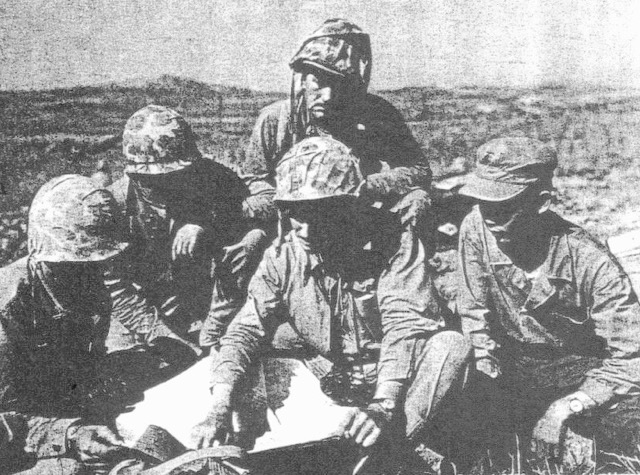
Captain Stevens (center pointing to map), with his platoon leaders and Korean interpreter, on the outskirts of Seoul. (Photo credit: US Marine Archives)
On August 2, Able Company arrived in Korea. The unit was immediately sent to the Pusan Perimeter. At the Battle of Obong-ni, or “No-name Ridge,” as the Marines called it, Captain Stevens was awarded a Bronze Star for valor. During a “sudden and ferocious enemy attack,” the Marine officer rallied his men, repulsed the enemy, and reorganized his company for a counterattack. "His outstanding display of personal courage, devotion to duty and leadership was an inspiration to his command” (from award citation).
At midnight on September 6, Able Company was pulled from the front lines and told to begin preparing for an upcoming “secret” amphibious operation. The next day a new officer reported to the company: Lieutenant Baldomero Lopez. The 25-year-old Marine from Tampa, Florida, had volunteered to join the unit.
Landing At Red Beach
On September 15, 1950, D-day for the Inchon Landing, Stevens and his men climbed over the railings of their troop ship, the USS Henrico, and boarded landing craft for their 5:30 p.m. assault on Red Beach. As they raced towards the shore and “the first wave came within 30 yards of the seawall,” Captain Stevens radioed for US Navy Skyraider attack planes to make strafing passes along the beach.
Moments later, their landing craft slammed against Inchon’s rocky shore.
When Lt. Lopez, the 3rd platoon commander, and his men landed on the beach, there was no room to maneuver. The Marines immediately began taking casualties. For a brief moment the attack faltered.
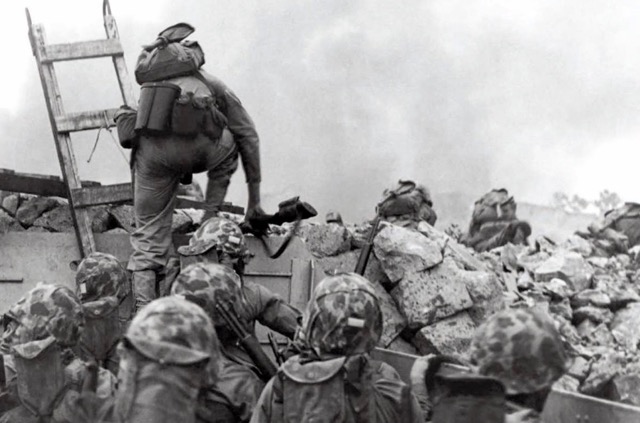
Lt. Baldomero Lopez leading his men over the seawall at Inchon. (Photo credit: USMC)
Sacrificing So That Others Might Live
Realizing the situation was becoming desperate, Lt. Lopez stormed over the seawall into a hail of enemy fire, crawled forward, and pulled the arming pin from a hand grenade. Stevens later explained, “He [Lopez] got ready to throw the grenade into the bunker, and as he lifted his arm. . .he was hit in the right shoulder and chest by automatic weapon fire.”
The young Marine lieutenant swept his wounded right arm toward the grenade, pulled it under him, and “took the full impact of the explosion.” He died instantly. Lt. Lopez was posthumously awarded the Medal of Honor, becoming the first Marine of the Korean War to receive the nation's highest award for valor. “He had served just 8 days in Korea and less than 1/2 hour in combat,” Stevens said.
Minutes later, Able Company Marines took their objective, paving the way for subsequent waves of men to land at Inchon and repulse the enemy. In the 30-minute fight to secure just one corner of Red Beach, eight Marines from Stevens’ company had died.
Stevens and his men went on to fight in the streets of Seoul, land at Wonsan, make their way to the snow-covered mountains of North Korea, and take part in one of the most epic battles in Marine Corps history: Chosin. During his time in Korea, Stevens honorably served his men, his country, and his beloved Corps.
"Dogged Determination and Indomitable Spirit"
Twelve years after returning from the Korean War, LtCol Stevens retired from the Marines, settled in San Francisco, and began a successful business career that spanned four decades.
His memories of WWII, Korea, and the brave men he served with, however, stayed with him. In 2009, the Korean War Memorial Foundation (KWMF) was started in San Francisco, and Stevens immediately joined the effort to raise funds to construct a monument to the men who served, sacrificed, and died during the Korean War.
When asked about Stevens’ contribution to the project, Gerry Parker, Executive Director of KWMF, said, “John worked six, often seven, days a week, devoting himself heart and soul to the demanding mission of bringing the Korean War Memorial from dream to reality.”
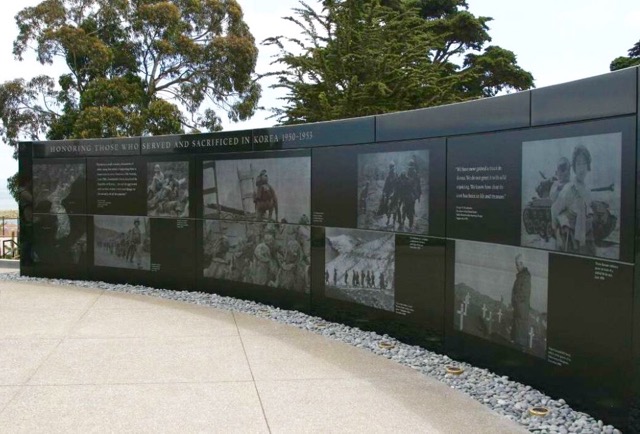
The main exhibit at the Korean War Memorial at the Presidio in San Francisco. (Photo credit: Gerry Parker)
On August 1, 2016, the memorial was officially opened in San Francisco’s Presidio. “It now stands as a testament for all time to his dogged determination and indomitable spirit,” Mr. Parker proudly told me.
Mr. Stevens is survived by his wife, Jody, four children, seven grandchildren, and 12 great-grandchildren. He will be greatly missed by all those who had the honor of knowing, serving, and working him. As one of the “Greatest Generation,” a man who sacrificed so much for his country, Mr. Stevens' memory will live forever in the hearts of his fellow Americans.
God Bless You, John! Semper Fidelis!
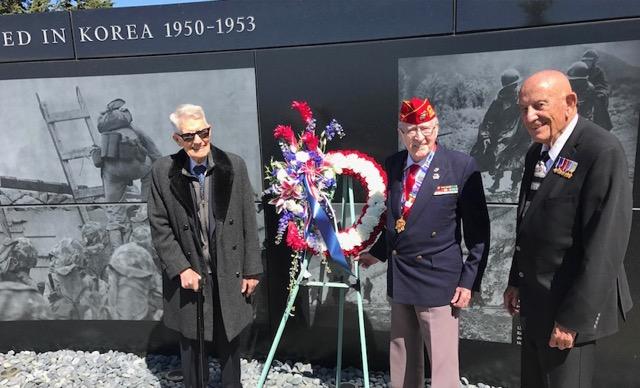
Standing at the Korean War Memorial in San Francisco are: (from left to right) John R. Stevens, LtCol, USMC (Ret.), Lt. Lopez’s Commanding Officer (Able Company, 1st Battalion, 5th Marines) at Inchon and the co-founder and director of Korean War Memorial Foundation (http://www.kwmf.org), Donald F. Reid, Sgt, USMC, and co-founder and treasurer of KWMF, and William D. "Denny" Weisgerber, GySgt, USMC, (Ret.), a Navy Cross and Purple Heart recipient for his valor and wounds received (he lost a leg) at the battle of "The Hook” in western Korea in 1952. (Photo credit: Gerard Parker, Executive Director, KWMF)
The author would like to thank LtCol John Stevens, Gerry Parker, and Greg DeRego for their friendship and support in researching and writing this article.
Top picture: John Stevens' bootcamp graduation photo, 1939 (Photo credit: John Stevens).
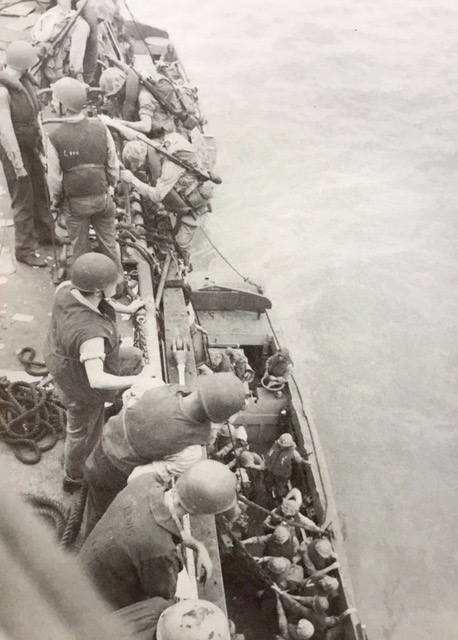
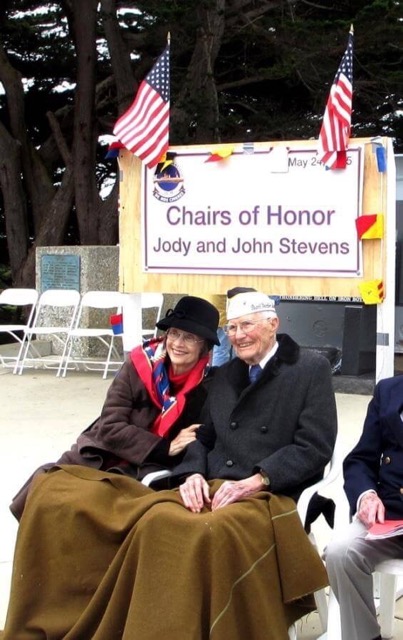
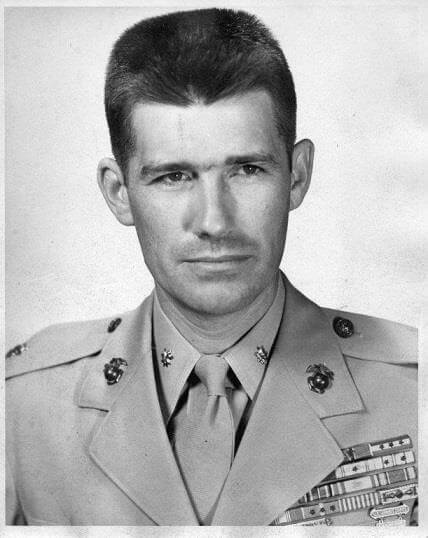

He has truly proven that this country was Not brought up by cowards, but instead great preservation of our sole beliefs in democracy and the fight for our incredible “Freedom”! I too, have learned that belief which I followed my father who was a WWII vet. and I a Marine Vietnam Vet.
Sincerely, Cpl. Michael M. Andrusko-Squad Leader-:69-70-71
E-mail-oneiplaya769@gmail.com
Professional Tick-Shot & Artistic Pool Player-Blind in One Eye
Thanks for your service in Vietnam, and we also salute your father!
Glad you enjoyed the post and appreciate your reading it. Semper Fi!
For those Marines and Corpsmen that have not personally met Col Stevens if you have a chance to meet him and wife Jody you are in for a treat. Col Stevens made all three landings: Puson, Inchon and Wonson. Each year that he is able, the Col returns to Pearl Harbor for Commemoration Services of 07 December 1941. Aloha & Semper Fi! Dave Franklin, USMC Ret. 1958-1986.
Thanks for reading the blog and commenting, David. Appreciate your support of Col. Stevens and the work he does. I myself hope to meet him in person next time I’m in the States.
Semper Fi!
The young generation of today need to stop whining and take a lesson from this great American!!
Thanks for reading and commenting, Evan.
We can definitely all learn something from John Stevens’ incredible life of service! He’s truly a great American.